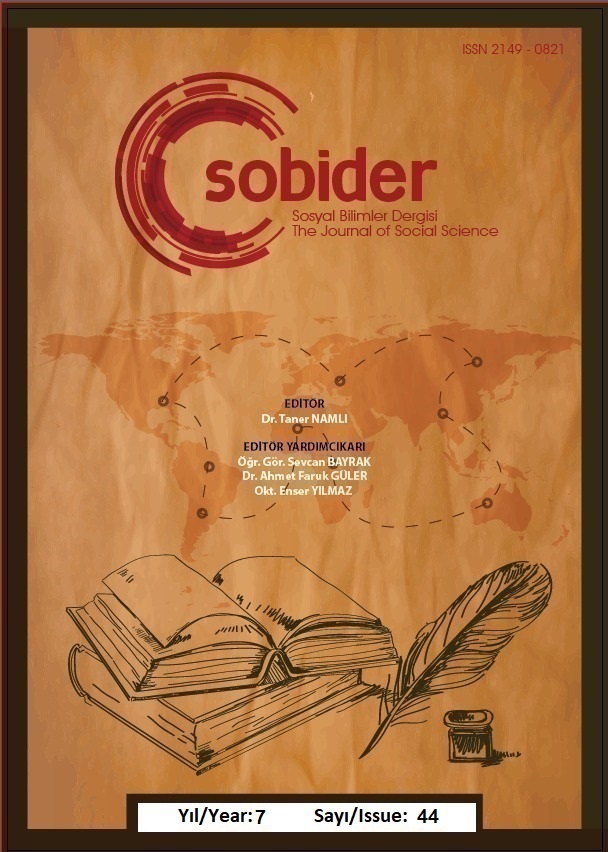Author :
Abstract
Flüt eğitiminde flütü tutuş ve flütle duruş pozisyonlarının, özellikle başlangıç aşamasında doğru anlaşılması ve uygulanması, flüt eğitimi sürecinde başarıyı etkileyen önemli konulardan bir tanesidir.Flüt eğitiminde doğru bir tekniğin temeli doğru beden pozisyonu ve flütün doğru bir şekilde dengelenmesiyle rahat bir tutuş pozisyonuna dayanır.Doğru pozisyonla çalmak nefes kontrolü açısından oldukça önemlidir ve böylece mümkün olan en iyi ton üretilir.Ayrıca olası bedensel incinmelerden korunmada doğru tutuş pozisyonları önemlidir. Flüt eğitiminde tutuş ve duruş pozizyonları çoğunlukla başlangıç metotlarında ele alınmaktadır. Ancak başlangıç metotlarının büyük birçoğunluğu yabancıbir dilde yazılmıştır. Öğrencinin anlamadığı bir dilde yazılmış olan bir metotla çalışması, istediği bilgiye ulaşmasını engelleyebilir. Bu sebeple öğretmenin olmadığı durumlarda, öğrenci çalıştığı metotta doğru bilgiye ulaşabilmeli, nasıl çalışması gerektiğini okuyarak ve görerek öğrenebilmelidir. Bu noktadan hareketle, bu çalışmada flüt eğitiminde flütü tutuş ve flütle duruş pozisyonlarını gerek teorik bilgilerle gerekse görsellerle detaylı bir şekilde anlatarak, öğrencilere doğru davranışlar kazandırmak ve böylece öğrencilere kaynaklık etmek, yol göstermek amaçlanmaktadır. Bu amaç doğrultusunda konu ile ilgili yerli ve yabancı kaynaklar incelenerek literatür taraması yapılmıştır. Elde edilen bulgular flütü tutuş ve flütle duruş pozisyonları bakımından ele alınarak sunulmuştur.
Keywords
Abstract
The correct understanding and application of flute holding and flute posture positions in the flute education, especially at the beginner level, is one of the important issues affecting success in the flute education process. The basic of a correct technique in flute education rests on a comfortable holding position by balancing the flutecorrectly. Playing with the correct position is very important in terms of breath control and thus produces the best possible tone. Also, correct holding positions are important in protecting against possible bodily injuries. The holding and posture positions in the flute education are mostly describes in the beginner methods. However, a great majority of the beginner methods are written on a foreign language. Working with a method written on a foreign language can block the necessary information. For this reason, when the teacher is not present, the student should be able to access the right information in the method he / she works in, and be able to learn how to study by reading and seeing it. From this point of view, it is aimed to teach the flute holding and flute holding positions in the flute education with the theoretical knowledge and visually detailed way in this study to give correct behavior to the students and thus to provide a source and guidance for the students. For this purpose, the literature was searched by examining the domestic and foreign sources related to the subject. The findings are presented in terms of flute holding and flute posture positions.
Keywords
- Akel, B. S., Önder, C. G., Berki, T. (2010). İki Farklı Flüt Tutuş Pozisyonunun Kas-Iskelet Sistemi Üzerindeki Etkilerinin Karşılaştırılması. Fizyoterapi Rehabilitasyon, 21(1), 2026.
- Balcı, A. (2001). Sosyal Bilimlerde Araştırma. Ankara: PegemA Yayıncılık.
- Burubatur, M. (2006). Eğitim Fakülteleri Müzik Eğitimi Anabilim Dallarında Birinci Sınıf 1.Ve 2. Yarıyıl Viyolonsel Eğitiminde En Çok Kullanılan Metot, Etüt Ve Egzersizlerin Incelenmesi. Yüksek Lisans Tezi, Selçuk Üniversitesi Sosyal Bilimler Enstitüsü, Konya.
- Cüceoğlu, G. (2008). Flüt Çalışmasından Kaynaklanan Bedensel Sorunlar Çerçevesinde Geliştirilmiş Bir “Flüt Isınma Programı”. Doktora Tezi, Gazi Üniversitesi Eğitim Bilimleri Enstitüsü, Ankara.
- Dilman, E. (2016). Müzik Eğitimi Lisans Programında Yer Alan Bireysel Çalgı I-II (Flüt) Dersine Yönelik Metot Önerisi. Yüksek Lİsans Tezi, Mehmet Akif Ersoy Üniversitesi, Eğitim Bilimleri Enstitüsü, Burdur.
- Ekebalkan, S. (2007). Flüt Eğitiminde Çalışma Yöntemlerinin Teknik Ve Pedagojik Yönden Incelenmesi.Yüksek Lisans Tezi, Dokuz Eylül Üniversitesi Güzel Sanatlar Enstitüsü, İzmir.
- Galway, J. (1999). Flute. London: Kahn&Averill.
- Pearson, L. (2002). Body Mapping For Flutists What Every Flute Teacher Needs To Know About The Body. Columbus OH: Flutibia.
- Tatu, G. (2006). Flüt Metodu. İstanbul: Pan Yayıncılık.
- Toff, N. (1996). The Flute Book A Complete Guide for Student and Performers. New York: Oxford University Pres.
- Önder, C.G. (2012). Müzik Eğitimi Anabilim Dallarında Kullanılan Başlangıç Flüt Eğitimi Metotlarının İncelenmesi. e-Journal of New World Sciences Academy,7(2), 100-109.





